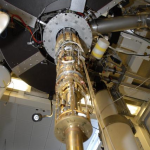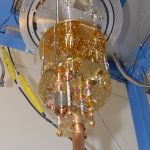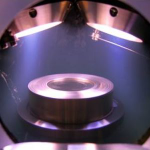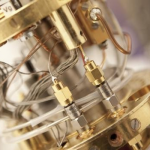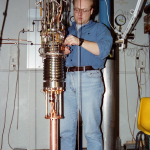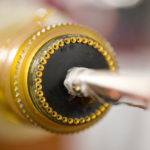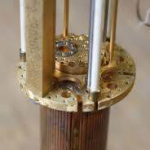

- Photon Transport in a Bose-Hubbard Chain of Superconducting Artificial Atoms
G. P. Fedorov et al., Phys. Rev. Lett. 126, 180503 (2021) - Path-Dependent Supercooling of the
He3 Superfluid A-B Transition
Dmytro Lotnyk et al., Phys. Rev. Lett. 126, 215301 (2021) - Superconductivity in an extreme strange metal
D. H. Nguyen et al., Nat Commun 12, 4341 (2021) - High-Q Silicon Nitride Drum Resonators Strongly Coupled to Gates
Xin Zhou et al., Nano Lett. 21, 5738-5744 (2021) - Measurement of the 229Th isomer energy with a magnetic micro-calorimeter
T. Sikorsky et al., Phys. Rev. Lett. 125 (2020) 142503
Microstructuring YbRh2Si2 for resistance and noise measurements down to ultra-low temperatures
Alexander Steppke, Sandra Hamann, Markus König, Andrew P Mackenzie, Kristin Kliemt, Cornelius Krellner, Marvin Kopp, Martin Lonsky, Jens Müller, Lev V Levitin, John Saunders, Manuel BrandoThe discovery of superconductivity in the quantum critical Kondo-lattice system YbRh2Si2 at an extremely low temperature of 2 mK has inspired efforts to perform high-resolution electrical resistivity measurements down to this temperature range in highly conductive materials. Here we show that control over the sample geometry by microstructuring using focused-ion-beam techniques allows to reach ultra-low temperatures and increase signal-to-noise ratios (SNRs) tenfold, without adverse effects to sample quality. In five experiments we show four-terminal sensing resistance and magnetoresistance measurements which exhibit sharp phase transitions at the Néel temperature, and Shubnikov–de-Haas (SdH) oscillations between 13 T and 18 T where we identified a new SdH frequency of 0.39 kT. The increased SNR allowed resistance fluctuation (noise) spectroscopy that would not be possible for bulk crystals, and confirmed intrinsic 1/f-type fluctuations. Under controlled strain, two thin microstructured samples exhibited a large increase of TN from 67 mK up to 188 mK while still showing clear signatures of the phase transition and SdH oscillations. Superconducting quantum interference device-based thermal noise spectroscopy measurements in a nuclear demagnetization refrigerator down to 0.95 mK, show a sharp superconducting transition at TC = 1.2 mK. These experiments demonstrate microstructuring as a powerful tool to investigate the resistance and the noise spectrum of highly conductive correlated metals over wide temperature ranges.
New J. Phys. 24, 123033 (2022)
doi: 10.1088/1367-2630/aca8c6
arxiv: https://arxiv.org/abs/2301.03928
